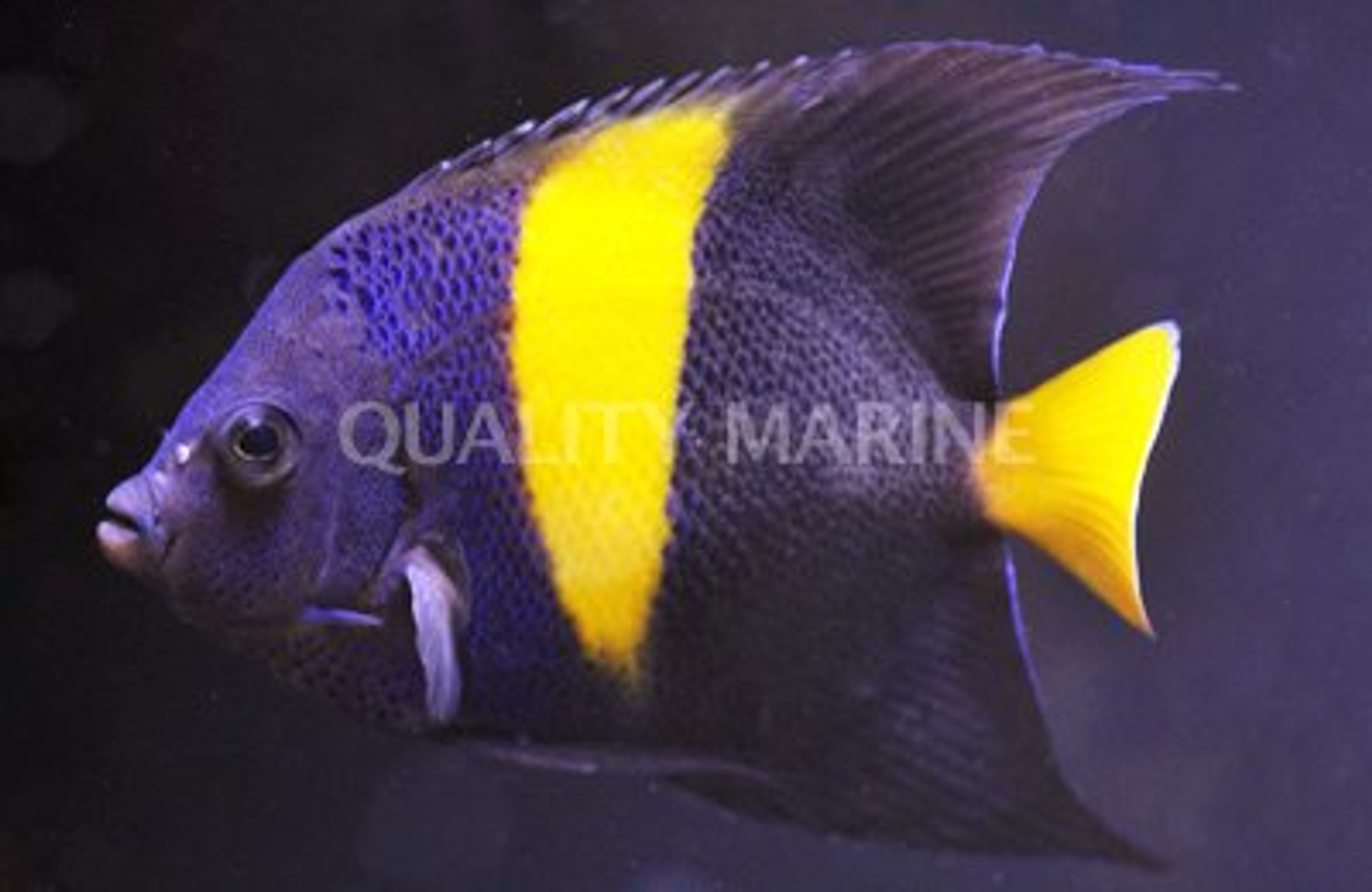Asfur Angelfish (Pomacanthus asfur)

The Asfur Angelfish is a species mired in confusion, Aquarists, divers, and sometimes even scientists struggle to correctly recognize it, which naturally invites the question what is an Asfur?
The species, now known as Pomacanthus asfur, was described way back in 1775 following a pioneering (and ultimately doomed) expedition to the Red Sea led by the Finnish naturalist Peter Forsskl (who would die in Yemen from Malaria). Also described on this excursion was the confusingly similar Yellowbar Angelfish (P. maculosus).
Though Forsskl was able to figure out the difference between these two species nearly 250 years ago, many today still struggle with these confounding lookalikes. For example, a study published in 2010 purported to have documented the first instance of P. asfur in the Mediterranean except it was just a misidentified P. maculosus. It was reported again off the coast of Malta, but, again, it was based on a misidentification. What hope do aquarists have if researchers publishing in peer-reviewed journals cant even get it correct?! Even the IUCNthe governing body that determines which species are Endangeredhas misstated the distribution of this species!
But despite this comedy of errors, theres actually not much difficulty in identifying P. asfur if one knows what to look for. The traits to focus on are the colors of the head, the yellow bar, the caudal fin, and the shape of the anal fin.
To recognize P. asfur: 1) the head (actually the area just surrounding the head) has all the scales colored in a beautiful shade of blue, while in P. maculosus this coloration is concentrated only in a few of the dorsal scale. 2) the yellow bar is placed more towards the front of the body, such that the pectoral fin touches it when appressed against the body (in P. maculosus, the pectoral fin will not reach it). It also extends well into the dorsal fin, unlike in P. maculosus. 3) the caudal fin is a bright, unblemished yellow, whereas P. maculosus has variably developed blue markings throughout the fin, generally giving it a duller, blue-toned look. 4) the anal fin ends in a long filament, matching the length of the dorsal fin filament, while P. maculosus often (though not always!) lacks the anal fin filament.
The two also differ in their ecology. P. maculosus is a common sight on coral reefs, where it feeds predominantly (~75% of the diet) on corals, with a mix of sponges and worms making up most of the remainder. Contrast that with P. asfur, which favors silted inshore habitats, feeding mostly on sponges and tunicates. In fact, its quite rare to see P. asfur in photographs, as few divers venture into the muddy realm this fish prefers. And the two differ biogeographiclly, with P. asfur found only in the Red Sea (despite claims to the contrary, IUCN) and P. maculosus occurring throughout the continental shorelines of the Western Indian Ocean.
As far as aquarium care goes, both of these large species have similar husbandry requirements. Both will top out at well over a foot in length, though its more typical to see them at around 10 inches in captivity, with the distinctive adult colors emerging at roughly half that size. The largest specimens may take 20 years or more to reach their fullest proportions. A fish of this size necessitates a fairly large tank, perhaps 250+ gallons. Given the corallivorous proclivities of Pomacanthus, most wind up in FOWLR systems, but it is certainly possible to mix P. asfur alongside most SPS corals, making for a truly striking centerpiece.